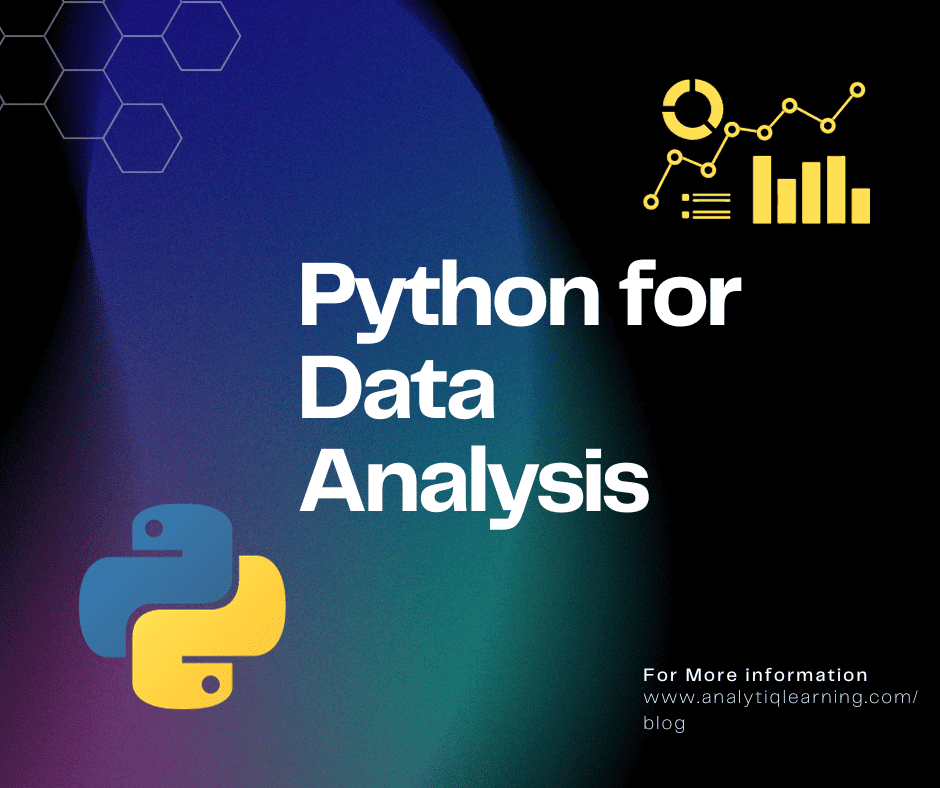In today’s data-driven world, the ability to sift through vast amounts of information, extract insights, and make informed decisions is more critical than ever. Python, an intuitive and versatile programming language, has emerged as a go-to tool for data analysis. But what makes Python the ideal choice for this task? Let’s dive in!
1.Beginner-Friendly Syntax
Python’s syntax is clear, concise, and easy to read. This means even those new to programming can quickly get up to speed and start analyzing data without a steep learning curve. The intuitive nature of Python allows analysts to focus on the task at hand, rather than being bogged down by complex code.
2.Extensive Libraries for Data Analysis
One of Python’s biggest strengths is its vast array of libraries tailored for data analysis. Some of the most popular include:
*Pandas*: Provides data structures and functions needed to efficiently manipulate large datasets.
*NumPy*: Focuses on numerical operations and supports large, multi-dimensional arrays and matrices.
*Matplotlib & Seaborn*: Essential for data visualization, allowing analysts to create a wide range of static, animated, and interactive plots.
*SciPy*: Used for advanced computations.
*Scikit-learn*: A machine learning library that offers simple and efficient tools for data analysis and modeling.
3.Versatility and Integration
Python isn’t limited to just data analysis. It can also be employed in web development, automation, cybersecurity, and more. This versatility means that insights derived from the data can be integrated into web apps or used to automate specific tasks, all within the same language.
4.Active Community
Python’s community is vast and ever-growing. This translates to a plethora of tutorials, forums, and resources available online. Whether you’re troubleshooting an issue or seeking advice on best practices, the Python community is an invaluable resource.
5.Machine Learning and AI
In the era of AI and machine learning, Python stands tall. Libraries like TensorFlow, Keras, and PyTorch have made Python the language of choice for deep learning projects. This means analysts using Python are well-equipped to transition from traditional data analysis to more advanced techniques, ensuring their skills remain relevant as technology evolves.
6.Scalability and Big Data
Python’s capability doesn’t stop at smaller datasets. With libraries like Dask or PySpark, Python seamlessly scales to handle big data. Whether your data resides in your local machine or distributed systems like Hadoop, Python has the tools to process and analyze it.
7.Comprehensive Data Visualization
Visualizing data is key to understanding and conveying insights. With Python, analysts can go beyond basic charts to create intricate visualizations, heatmaps, or even geospatial data plots. Libraries like Plotly and Bokeh even allow for interactive plots, enhancing the user’s experience.
8.Support for Diverse Data Sources
Python interfaces well with various data sources. Whether your data resides in SQL databases, Excel spreadsheets, or cloud platforms like Google Analytics, Python can fetch, process, and analyze it.
But beyond its technical advantages, what does the rising dominance of Python mean for job prospects, future career paths, and the broader industry? Let’s unravel this.
### *1. Python’s Dominance in Numbers*
1.Job Opportunities*:
According to Indeed, job postings that mention “Python” and “data analysis” have seen a 73% increase in the last three years, indicating a robust demand for Python-centric data analysts.
2.Pay Scale*:
Glassdoor suggests that the average salary for Python data analysts in the US stands at around $79,000 per year, with top professionals raking in upwards of $120,000.
1.Future Projections*:
The U.S. Bureau of Labor Statistics projects that roles related to data analysis will grow by 16% between 2020 to 2030, a rate much faster than the average for all other professions.
### *2. Who Can Harness Python for Data Analysis?*
Almost anyone with a knack for numbers and curiosity can learn Python for data analysis.
This includes:
- Career switchers from non-technical backgrounds.
- Existing analysts aiming to upscale.
- Students in fields like economics, engineering, or any STEM majors.
- Professionals from finance, marketing, or any sector that deals with sizable data.
### *3. Leading Companies Betting on Python*
Tech giants like Google, Facebook, and Amazon rely heavily on Python for their data needs. But it’s not just the tech sphere; sectors like healthcare (with firms like Pfizer), finance (like J.P. Morgan), and even retail (Walmart) are on the hunt for Python-savvy data analysts.
### *4. The Evolution of Hiring Patterns*
More companies are prioritizing analytical skills over traditional educational backgrounds. This shift means that regardless of your formal education, if you’re proficient in Python and can showcase your analytical prowess, doors will open. Platforms like Coursera, Udemy, and edX have numerous success stories of individuals who’ve made successful career transitions courtesy of Python.
### *5. The Extended Ecosystem*
Python’s prowess in data analysis is amplified by its libraries. This ecosystem, combined with Python’s gentle learning curve, can make a formidable difference in data-driven decision-making processes across industries.
### *Conclusion*
The numbers don’t lie – Python’s position in the world of data analysis is unassailable. If you’re looking to make a mark in the ever-evolving landscape of data, there’s no better ally than Python. The burgeoning demand, lucrative pay, and future-forward projection make Python a ticket to a thriving career in data analysis.
Python’s growth as the leading language for data analysis isn’t coincidental. Its simplicity, coupled with its powerful tools and libraries, makes it an obvious choice for analysts around the world. Whether you’re just starting out or are an experienced data scientist, Python offers the tools, community, and versatility needed to harness the power of data in our modern world.
*References:*
1.[Indeed Hiring Lab](https://www.hiringlab.org/)
2.[Glassdoor Economic Research](https://www.glassdoor.com/research/
3.[U.S. Bureau of Labor Statistics, Occupational Outlook Handbook](https://www.bls.gov/ooh/)

































